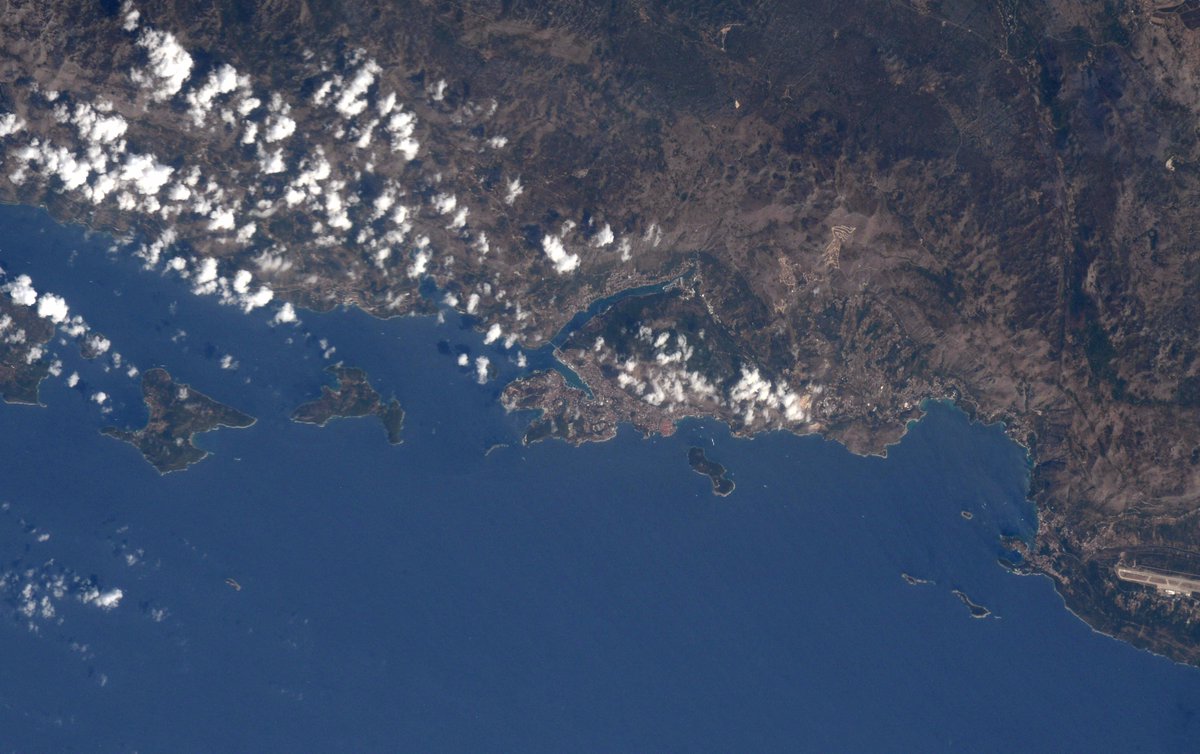[:ja]ランディ・ブレズニク宇宙飛行士がISSから撮影したクロアチアのドブロブニクです。

ドゥブロヴニクはクロアチアの都市ですが、ボスニア・ヘルツェゴビナの海港ネウムが回廊状態で分断しており、クロアチア本土とは陸続きではなく飛び地です。歴史的に海洋貿易によって栄えたラグーサ共和国の首都として、巧みな外交術と豊富な富に支えられ15~16世紀にかけて特に発展しました。1979年に世界遺産に登録された旧市街は「アドリア海の真珠」とも謳われる美しい町並みを誇ります。町の顔でもある城壁は周囲約1,900m、厚さ5m、高さ20mの堅牢な市壁で、最初に造られたのは7世紀とされますが、主要な部分は12世紀から17世紀にかけて造られています。
地上の様子はこちらです。

参考文献: Randy Bresnik’s Tweet
ウェブ地球儀で地球俯瞰画像を見る: LiVEARTH
[Earthview Wonders] No.441: Dubrovnik, Croatia🇭🇷
Astronaut Randy Bresnik captured from ISS Dubrovnik, Croatia.

Dubrovnik, the UNESCO World Heritage since 1979, is called the “Pearl of the Adriatic” and is one of the most prominent tourist destinations in the region. As the capital of the maritime Republic of Ragusa, it achieved a high level of development during the 15-16th centuries. A feature of Dubrovnik is its 20m tall 5m thick walls that run almost 2km around the city.
The local scenery on the ground is as follows.

Reference: Randy Bresnik’s Tweet
See earthview photo gallery with web-globe: LiVEARTH[:en][Earthview Wonders] No.441: Dubrovnik, Croatia🇭🇷
Astronaut Randy Bresnik captured from ISS Dubrovnik, Croatia.

Dubrovnik, the UNESCO World Heritage since 1979, is called the “Pearl of the Adriatic” and is one of the most prominent tourist destinations in the region. As the capital of the maritime Republic of Ragusa, it achieved a high level of development during the 15-16th centuries. A feature of Dubrovnik is its 20m tall 5m thick walls that run almost 2km around the city.
The local scenery on the ground is as follows.

Reference: Randy Bresnik’s Tweet
See earthview photo gallery with web-globe: LiVEARTH[:]